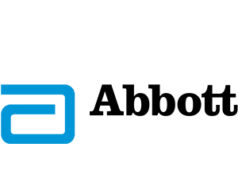This advertorial is sponsored by Medtronic.
 Evolut PRO+ is the latest generation of self-expanding transcatheter aortic valve implantation (TAVI) system in Medtronic’s CoreValve and Evolut family of devices. In this interview, David Hildick-Smith (professor of interventional cardiology and consultant cardiologist, University Hosptials Sussex, Brighton, UK) discusses key features of the Evolut PRO+ device, how its low delivery profile can be advantageous in cases with challenging access, and how data from studies including Evolut Low Risk and SURTAVI reinforce the haemodynamic performance of the device.
Evolut PRO+ is the latest generation of self-expanding transcatheter aortic valve implantation (TAVI) system in Medtronic’s CoreValve and Evolut family of devices. In this interview, David Hildick-Smith (professor of interventional cardiology and consultant cardiologist, University Hosptials Sussex, Brighton, UK) discusses key features of the Evolut PRO+ device, how its low delivery profile can be advantageous in cases with challenging access, and how data from studies including Evolut Low Risk and SURTAVI reinforce the haemodynamic performance of the device.
With TAVI procedures being offered to a wider population of patients, including those with moderate or low surgical risk, more challenging vascular access, and bicuspid anatomies, having the right valve technology available that is adaptable to a broad range of anatomical variations is increasingly important.
The Evolut PRO+ system is available in four valve sizes including 23, 26 and 29mm diameters, which are able to access vessels down to 5mm, and a 34mm device that offers an access solution in vessels down to 6mm, making it the widest annulus range of any self-expanding TAVI system currently on the market. “The potential advantage is that you can introduce the Evolut into systems where otherwise you might have to consider a transcaval or a transaxiliary approach,” Hildick-Smith tells Cardiovascular News. “There are patients with quite significantly diseased femoral and iliac systems who will benefit from TAVI in whom you are worried about putting in a 16 French or bigger sheath,” he explains, adding that to be able to deliver a slightly smaller sheath size may be the difference between being able to advance the valve through the iliac vasculature or not.
“Every small decrement in valve diameter for the delivery system is to be greatly welcomed, even though each individual change only allows you to treat an extra 1 or 2% of patients,” Hildick-Smith comments. He estimates that patients with smaller vessels requiring alternative vascular access, including potentially transcaval or transaxiliary approaches, represent between 5–8% of TAVI cases. “The advantage of the Evolut here is the calibre and the sheathlessness of the system,” he says. “Commonly, when we are looking at quite poor vascular access, we will say ‘maybe this is an Evolut case’. That means that it does have that niche of being able to handle relatively hostile femoral and iliac anatomy.”

The Evolut system is designed with an outer porcine pericardial tissue wrap that adds surface area contact and tissue interaction between the valve and the native aortic annulus, which Hildick-Smith sees as an important feature. “The pericardial wrap is a help as far as sealing is concerned. The Evolut is very good because it has a good radial opening force, good radial strength, and so even after you have implanted it, it keeps expanding into little crevices, nooks and crannies, and will diminish any aortic regurgitation that you are left with at the end of the procedure, usually from very mild to zero.”
The increased surface contact with the valve’s native anatomy created by the pericardial wrap assists in the Evolut platform’s good performance in reducing paravalvular leak (PVL). Discussing his experience of the performance of Evolut PRO+ in this regard, Hildick-Smith comments that while previous generations of the CoreValve and Evolut platforms held up well in this area, Evolut PRO+ maintains this strength. “We have been very pleased with the outcomes,” he says. “We have used the system in some fairly hostile aortic anatomy with very good results, so I think at this stage we are very encouraged. We are finding it a slightly more dependable system than before, with slightly less chance of any significant movement on final release, and we have been very happy with it.”
“Ever since we first put in the CoreValve in 2007 I have been of the view that it has the best haemodynamic profile. This is because of the combination of the porcine leaflets, which are very thin, present no resistance to outflow, and the supra-annular positioning of the valve leaflets.”
Haemodynamics are another important area in which Evolut PRO+ appears to perform favourably. This is enforced by results from the Evolut Low Risk trial, presented at EuroPCR 2021 (18–20 May, virtual), assessing the performance of the CoreValve, Evolut R and Evolut PRO valves in over 700 low surgical risk patients with severe aortic stenosis versus surgical valve replacement. Two-year results demonstrated a statistically significantly lower mean aortic valve gradient (9mmHg vs. 11.7mmHg) and a larger effective orifice area than surgery (2.2cm2 vs. 2cm2).
“Ever since we first put in the CoreValve in 2007 I have been of the view that it has the best haemodynamic profile,” comments Hildick-Smith. “This is because of the combination of the porcine leaflets, which are very thin, present no resistance to outflow, and the supra-annular positioning of the valve leaflets.”
Evolut Low Risk trial results were followed by five-year outcomes from the SURTAVI trial, presented at the Transcatheter Cardiovascular Therapeutics annual meeting (TCT 2021; 4–6 November, Orlando USA and virtual), adding further to the evidence of haemodynamic benefits of the CoreValve and Evolut platforms. In the study, the TAVI arm demonstrated durable valve longevity, as evidenced by better mean aortic valve gradients (8.6mmHg vs. 11.2mm Hg; p<0.001) at five years.

Considering these results, Hildick-Smith says the findings were largely unsurprising. “In terms of the low risk studies, I think in many respects there was no surprise. What you get for the Evolut is in my view worth getting, which is that you have the greater radial strength, greater continued opening force, and most crucially, you are rarely left with any significant aortic regurgitation.”
Another important study assessing the performance of the Evolut PRO and PRO+ platforms has been the OPTIMIZE PRO clinical study, a postmarket, prospective multicentre study, covering 46 sites in the USA and Canada, and up to 15 sites in Europe. Interim data from the trial, presented at the Society for Cardiovascular Angiography and Interventions 2021 scientific sessions (SCAI 2021, 28 April–1 May, virtual), offer key insights in particular on the use of Evolut PRO+ in conjunction with the cusp overlap technique. This is intended to help implanters assess and achieve the target implant depth in an effort to reduce interaction with the conduction system.
“We do this routinely for all supra-valvular implants,” explains Hildick-Smith, “ideally we want no aortic regurgitation and do not want the patient to have any changing QRS complex. Usually in the cusp overlap view, you are able to do that.”
Discussing the findings from OPTIMIZE PRO, he details: “The results were very good, they had just under 10% pacing which in a low risk group is perfectly acceptable. All the pacing rates are coming down slightly as people modify their
implant techniques.”
As the first and so far only in Europe transcatheter valve with indication for the treatment of patients with bicuspid aortic valves who are at intermediate or higher risk of surgical mortality, a congenital heart defect affecting 1–2% of the general population, Evolut PRO+ offers an important treatment for patients in who had previously had limited options.
“I do not think there is much doubt at the moment as to the number one valve for bicuspid anatomy in Europe.”
“In a bicuspid case, the one thing that you are at more risk of generally is adverse outcomes such as annular rupture, which is usually catastrophic, whilst at the same time trying to get the best result in terms of aortic regurgitation, PVL and gradient across the valve. The Evolut allows you to do all that, and to do it safely, because it is a self expanding valve, moulding itself to the anatomy, rather than imposing itself on the anatomy,” comments Hildick-Smith.
“I do not think there is much doubt at the moment as to the number one valve for bicuspid anatomy in Europe.”













